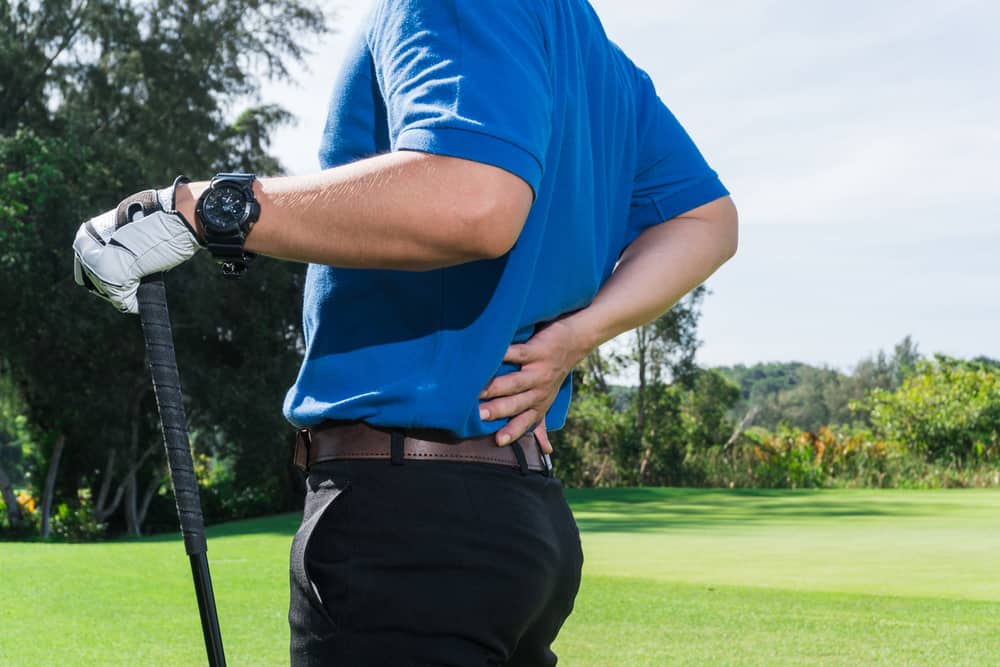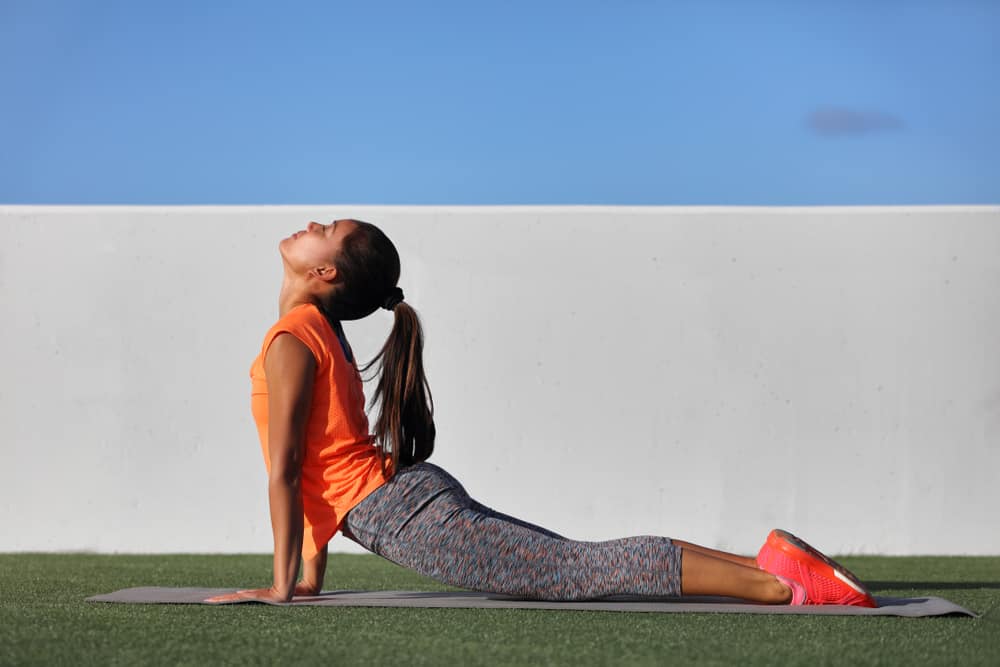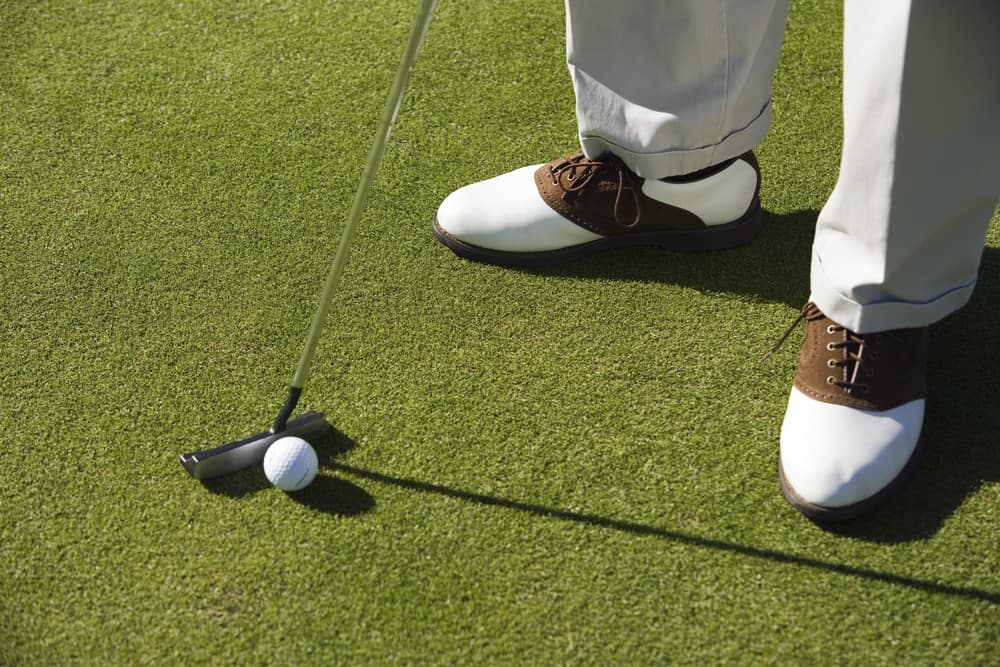
Unfortunately, golfers can be prone to injury.
The sport incorporates so many different muscles that it can be hard to escape a golf season without some form of injury.
One of the most common areas of pain that you are going to find is the back.
Golfers can struggle with upper, mid, and lower back pain.
Once this pain sets in, it is very hard to get yourself back on track and start swinging normally again.
However, there are some ways to avoid this mid-back pain, to begin with, and then some ways to help it go away a bit quicker.
If you want to have a successful season and avoid this pain, these are some tips that you should be following.
Mid Back Pain From Golf—Prevention

How you prevent mid-back pain will depend on the type of player you are and some of the issues you may have that can bring on the pain.
Each of these tips will help, but you must narrow down the ones that will have the most significant impact on your game.
1. Control The Speed
When you watch golf instructional videos or learn about new golf equipment, one of the things that you will learn is that more club head speed leads to more ball speed.
High levels of ball speed are going to give you the distance you need in your golf shots.
Of course, most golfers are looking to increase the distance that they can get in their game.
Therefore, learning to swing the club faster is a goal that many players have.
Certainly, we can understand the importance and the need for speed, but it should not be the only focus that a player has.
If you start focusing on speed a bit too much, you could leave yourself in a situation where mid-back pain could develop.
Essentially, the harder you swing, the more work your body is going to have to do to control it.
If you are in good shape and can handle this type of movement, then that is understandable.
However, if you feel like speed is new for you, you must make sure that you control this transition to a higher speed.
Watching professional golfers on television, you can see that their swing speeds are very high.
These golfers are able to swing the club at speeds we can only imagine.
However, this is not something that happened overnight.
These players spent years working on developing these speeds and then working on their bodies to maintain those speeds.
Don’t walk up on the first tee and think you are Dustin Johnson because chances are you will walk away with some mid-back pain.
2. Warm Up Before The First Tee
Warming up before you hit your first tee shot is essential.
Before you make your way to the first tee, you should spend some time on the range and do some stretching.
Most of the time, we recommend getting to the golf course about one hour before your tee time.
If you are able to do this, you give yourself time to swing, walk around a bit, stretch, and take a few chips and putts as well.
However, even with these recommendations in place, you will notice that some golfers just make a mad dash for the tee box.
They will come running up, throwing their shoes on, and grabbing a club from the bag.
Of course, any number of reasons can be behind this, but it is really not ideal to ignore the warm-up portion of the golf game.
If you don’t warm up, you could subject yourself to some mid-back pain.
The turning in that first swing can be enough to throw your back out and ruin the rest of your golf round.
It really only takes a bit of planning to arrive at the golf course a little early.
Take the time you need so your body doesn’t have to pay for it.
3. Swing Mechanics Adjustments
There are certain situations where a golfer’s swing habits could be causing them to have more back pain.
Sometimes there are swings in golf that are just not effective and not nearly as good as repeating the action that you need to do it properly.
Therefore, the solution is to make adjustments to your swing mechanics.
Essentially, it must be considered that there are times your swing could be causing your issues.
This is where we recommend going to a golf professional and asking for their opinion.
A golf professional can take a look at your swing, analyze where the issues are, and see if it’s causing your mid-back pain.
For the golfer who is struggling with pain because of something they are doing in their swing, chances are it will be pretty obvious to the golf pro.
This type of pain will start to develop after a few holes.
When you finish your round of golf, you will walk off the course and still be in pain.
However, the more time you spend away from the game, the better the pain will get.
This is how you know your swing mechanics may need an adjustment, and you can do that by working with a golf professional who specializes in this type of thing.
4. Develop A Golf Fitness Routine
Golfers who are serious about taking this game with them into their senior years need to consider the idea of developing a golf fitness routine.
With a golf fitness routine, you are going to be able to gain strength and flexibility and use that to help you become a better player.
If you think back to years ago when golf was more of a game for players who liked to enjoy a few hot dogs on the course, things have changed completely.
Golfers have realized how important both physical fitness and nutrition are when you are trying to become a better golfer.
If you can develop a fitness routine that allows your back to grow stronger, chances are it will only help you to eliminate mid-back pain.
The great thing about golf is that because it uses almost all of your muscles, any type of fitness regimen is going to help you become a better player.
Whether you decide to start walking daily or meet with a trainer to set up a golf-specific routine, you will only be making things easier for yourself long term.
Whatever the desire or routine is, you can put something together to work for your golf game.
Chances are, after putting a golf workout routine together, you will become a better golfer both physically and mentally.
For those who deal with an off-season from golf because of weather, this is a very smart way to invest your time.
5. Get A Proper Diagnosis
If this mid-back pain thing has been going on for quite some time, chances are it is time to get an opinion from a doctor.
There are lots of causes to this, and there could be some underlying issues that are causing you the pain.
If you find that your golf swing is not the only reason to blame, getting a diagnosis is going to really help to ensure you get better at the game.
The doctor will likely complete a series of tests and scans to see if you have any back issues that are aggravated by you playing golf.
Luckily, you can then take this advice and try and alter your swing accordingly.
Maybe it is the extension on the long swing or simply your setup that is causing the pain because of where it is in your body.
Regardless of where the issue is, you need to get a proper diagnosis sometimes if you want to be able to move on.
If the doctor recommends taking a break from golf altogether, try to find ways that you can get back into it.
See if daily stretching and workout routines could help to build your strength and get you back into a position where playing golf does not cause so much pain.
Finding a great Sports Medicine doctor is probably going to be your best bet.
These people understand the desire to stay involved in the game and continue to play golf.
If they’re not a golfer, a general practitioner may not understand what your goals are and why it matters to you to continue playing.
Stretches To Help Avoid Mid Back Pain While Golfing

One of the best ways to avoid pain when playing golf is to stretch before your round.
If you spend some time stretching, your body will be warmed up and ready to do what it needs to do on the course.
The problem that many golfers have is they don’t understand how to correctly perform the stretches.
You will be working on getting some twists and turns down, but is that really targeting the mid-back pain properly?
Let’s look at some stretches that are almost guaranteed to help you eliminate some of the pain that you deal with on the course.
These should be completed before a round of golf, but it can’t hurt to do them on off days or even after your round.
1. Exercise Ball Twists

When you are starting a home workout or exercise regimen, one of the first tips that you will get is to purchase an exercise ball.
The exercise ball will ensure that you can get some better balance and core strength if used the right way.
This will directly impact your back and the ability to prevent pain and discomfort during the swing.
You will want to sit on the exercise ball and get into a position where you feel balanced and stable.
Then take your elbows and lift them, so they are out to your sides but about the same height as your shoulders.
When you are in this position, you will start twisting.
All the while, it is essential to remain stable on the ball and to keep your feet balanced and stable.
You will not need to twist fast but simply work on making a turn to the left, a stop in the middle, and a turn to the right.
As you do this, you will always want to come back to the neutral position.
Once in neutral, start the process over again.
We recommend doing this for a minute or so and then standing up and walking around.
Come back to the exercise ball and then perform the exercise again.
Giving yourself breaks as you complete the process is smart so that you don’t fatigue.
Doing a stretch the right way for ten repetitions is much smarter than doing it the wrong way for twenty repetitions.
2. Lumbar Stretch

The lumbar stretch is another smart one to complete before heading to the golf course.
With the lumbar stretch, you are going to need to lie on the floor and on your stomach.
When you are lying flat, take your elbows and place them under your shoulders.
This is going to allow you to raise your head and your neck above the ground at a slight angle.
Your legs will stay on the ground, and your stomach is flat on the ground as well.
When you work on this lumbar stretch, you are going to feel the immediate impact that it has on stretching your mid-back.
The lumbar stretch can be completed in sets of about 10 repetitions.
Then, we recommend standing up, walking around, and switching to another stretch.
This is a great morning stretch for people who are looking to increase their mobility and rotation throughout the course of a regular day.
The stretch can be tailored to work within your physical capabilities, and that is partly what makes it one of the smarter choices out there.
3. Exercise Bands
If you are serious about getting better about golf and putting the time into your game, it is a smart idea to purchase some exercise bands to use at home.
With these bands, you can work on more than just stretches.
You can also increase your overall ability to hit the ball.
Exercise bands are great because they will help both flexibility and strength.
With an exercise band, you will hold your arms out at shoulder height and then grab onto an exercise band.
Hold this band in your hands tightly, and then start to pull it.
When you pull the band, you are likely going to feel it in your back.
There are different strengths of exercise bands that you can practice with to get more or less of a stretch in.
Overall, the exercise bands provide plenty of tension that can help you stretch out any back pain issues that you have been having.
The more you practice this stretch, the better you are going to get at it.
Spend time working on the duration and the length that you are able to pull the exercise bands.
This is one of those things that will take you just a few minutes each morning but will have a big impact on your overall health.
Should I Stretch After My Round Of Golf?

Many golfers wonder if it makes sense to stretch after a round of golf.
At this point, most players know the importance of stretching before a round, but to do so afterward seems as though it is pointless.
This is actually quite the opposite.
Golfers who stretch after their round have found that they have much more flexibility and mobility, and they see less interference with their future rounds of golf.
When you stretch after your round, you are essentially preparing your body for the next time you play.
Some golfers are going to start to tense up as their round goes on.
Whether it is the way you carry your golf bag, your stance, or that swing you took trying to hit the ball out of the woods, whatever it is, your body has just worked very hard to get you through 18 holes of golf.
The best way to ensure that this does not continue to cause problems for your game is to start stretching after each round of golf.
You can follow the same basic stretches we gave you above.
When you get in the door from golfing, take ten minutes to do the stretches and then go on with your day.
We all have an extra ten minutes in our day to help avoid mid-back pain.




Leave a Reply